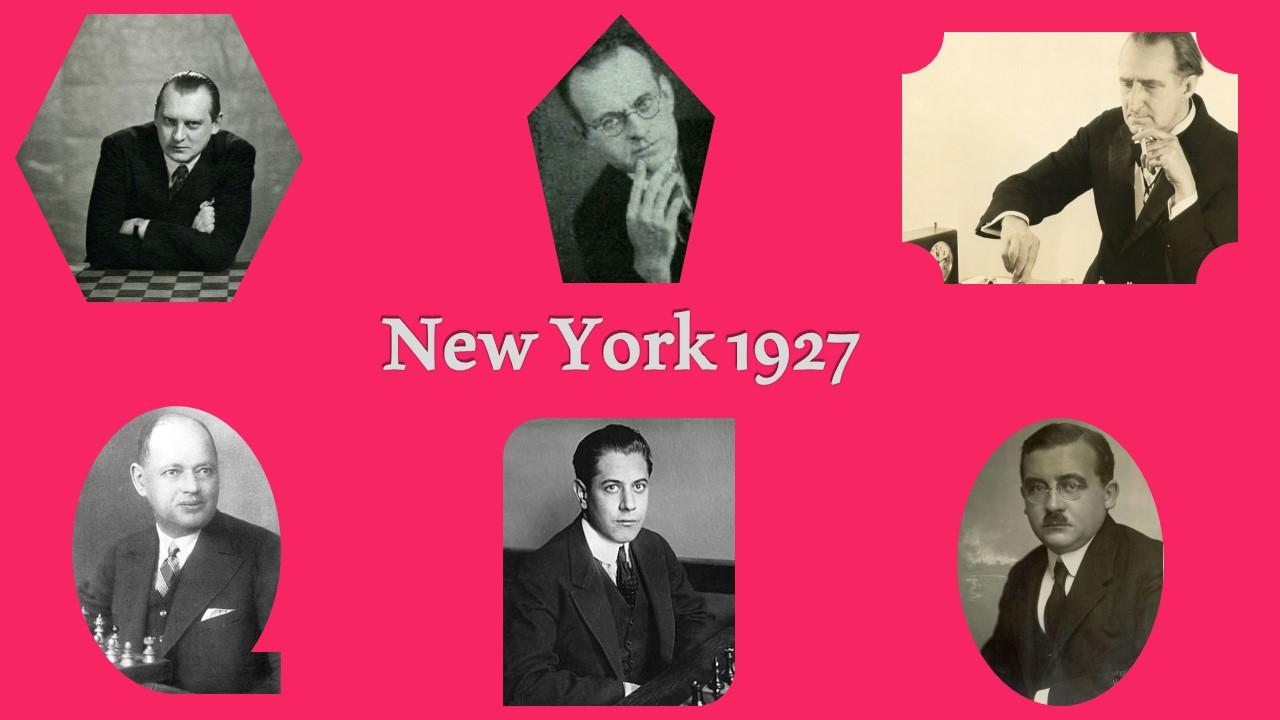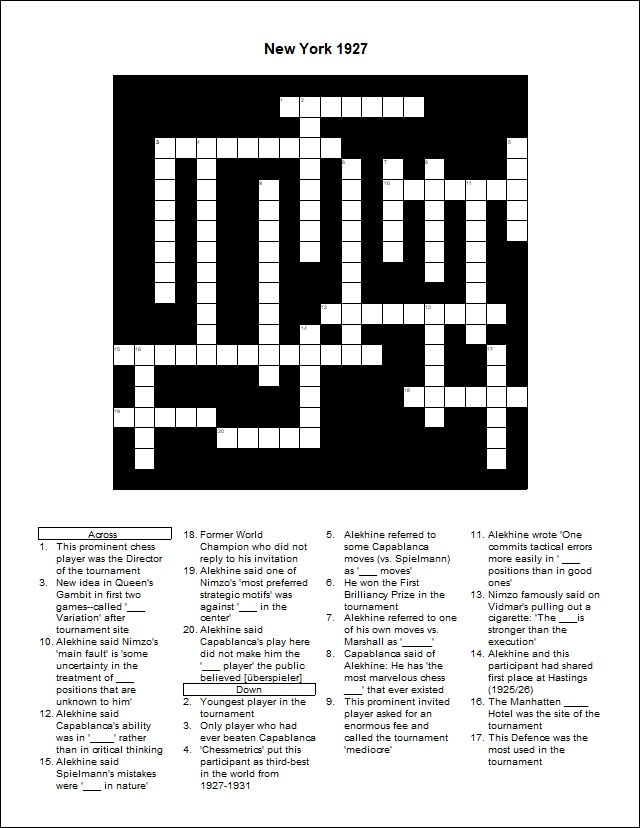
New York 1927
Three years after the famous New York 1924 tournament, top chess players gathered for New York 1927. But this time there were only six players.

Basics about the tournament are well-provided in “Great Tournaments of the Past: New York 1927”: https://www.chess.com/article/view/new-york-1927. The six participants, including World Champion, José Capablanca, were well-known, significant chess players: Alekhine, Capablanca, Marshall, Nimzowitsch, Spielmann, and Vidmar. But some of the world’s best were not present. Yet, Andy Soltis in the Foreword to the tournament book by Alexander Alekhine says “the tournament was one of the strongest ever held” [Alexander Alekhine, New York 1927, 21st Century Edition (Milford, CT: Russell Enterprises, 2011), 4.] Soltis goes on to explore reasons why “the 1927 tournament and its magnificent book have garnered only a fraction of the attention that New York 1924 achieved” (4).

After commenting on some explanations for this, Soltis concludes that “the most compelling reason for why New York 27 is largely forgotten is its lack of drama: The heavy favorite won easily” (6). Capablanca defeated second-place finisher, Alekhine 14½ to 11½ .
Alekhine’s tournament book is considered by Soltis to be “unlike any other tournament book ever written.” Writes Soltis: “Not only do you have one of the greatest annotators of all time rendering some brilliant analysis, but he melds it with an exceptional agenda, an anti-Capablanca agenda. The extraordinary bias is a rarity for tournament books, which were often written in cool, dispassionate and boring prose” (6).
But this is not “just a mean-spirited book” (8)! Why? Because Alekhine “goes beyond elaborate move analysis and offers deep positional insights and psychological observations.” He also “offers some valuable positional pointers” while also tossing out “some remarkable and original opening ideas.” Alekhine’s use of language is “entertaining.” Alekhine was a polyglot. At at a later tournament in Kemeri (1937) writes Soltis, Alekhine could “speak English with Reuben Fine, German with Kmoch, and French with everyone at the opening ceremony” (8-9).
Alekhine’s book is interesting for all these reasons, a “classic” tournament book—still instructive and highly useful. The English translation (80 years after the original German book) is excellent. Now we can all benefit from the superb chess played in this great tournament and from the commentary of the inimitable Alexander Alekhine!
Resources
Please note: “Great Tournaments of the Past: New York 1927”: https://www.chess.com/article/view/new-york-1927 listed above
Don’t miss the piece featuring pen-portraits of the players at https://www.kingpinchess.net/2011/10/new-york-1927-pen-portraits-by-george-currie/
Andy Soltis has discussed New York 1927 in his The Great Chess Tournaments & Their Stories (Radnor, PA: Chilton Book Company, 1975).
See also ‘Snapshots of the Tournament’ in Edward Winter’s, “Chess Notes,” 7602: New York 1927 (C.N. 3716) at https://www.chesshistory.com/winter/winter93.html
This Crossword introduces us to dimensions of the great New York 1927 tournament. I hope you will explore the tournament further and enjoy this look at some of its facets.

I trust you enjoyed getting acquainted a bit with New York 1927!
For Answers to the Clues, please click on the View Solution button below.
Please feel free to leave a comment.